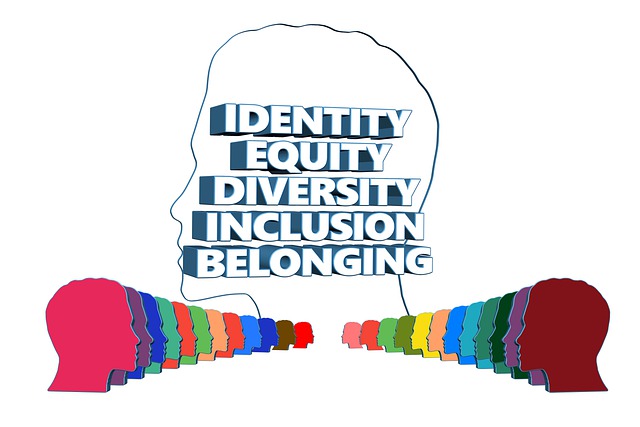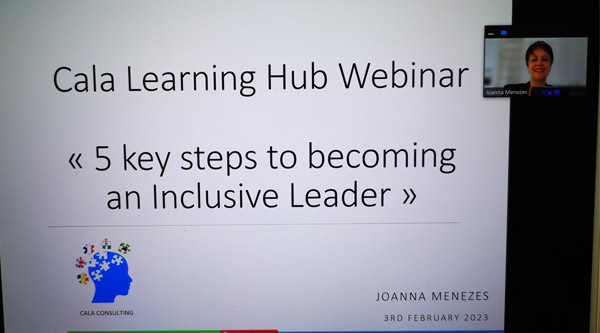Did you know that diversity of thought can improve a team's capacity for innovation by up to 20%? Or that diverse companies are 35% more profitable than others? That's why the organisations across the world are increasingly interested in the topic of Diversity and Inclusion (D&I).
In order to explain what it is exactly and, above all, how managers can contribute in fostering an inclusive workplace, Joanna Menezes, professional coach and trainer specialising in diversity, inclusion and interculturality, hosted a particularly interactive webinar on the subject, early February. About twenty members - from all walks of life - of the Cala Learning Hub network participated.
Diversity and inclusion, two different notions
It is impossible to talk about inclusive leadership without defining exactly what is meant by diversity and inclusion. "Diversity is about having a range of people with different racial, ethnic, socioeconomic and cultural characteristics, as well as different lifestyles, experiences and interests working in the same workplace," says Joanna Menezes. It is this variety that creates the creativity and richness of an organisation.
If diversity is the mix, how can you get the mix to work bearing in mind that differences can sometimes lead to misunderstanding and conflict? How do you turn all this potential into something positive? "The key lies precisely in what is called inclusion," answers Joanna. "Inclusion is about creating the conditions in which each person feels welcomed, respected, supported and valued, so that they can bring their authentic selves to work"
The benefits of Inclusive Leadership
"Creating an inclusive workplace is everyone's concern - it is not just HR's job - and managers have a vital role to play," Joanna points out. But what exactly is an inclusive leader? According to her, it is "someone who is able to adapt to the specificities of each team member, to value each potential, to take advantage of complementarities within the team or generate a shared vision "despite" the diversity of the team". The benefits of inclusive leadership are manifold : greater well-being, lower absenteeism, innovation, higher productivity... The list is very long! "But it requires effort, especially to overcome several obstacles such as fear, lack of knowledge or the belief that it is very time-consuming", warns Joanna.
5 key steps to becoming an Inclusive Leader
- Develop self-awareness to improve relationships with others, using the DiSC tool for example;
- Become aware of one's own stereotypes and prejudices, by taking the Harvard IAT test for example
- Acquire knowledge on cultures, gender identity, sexism... through training, books or podcasts;
- Identify areas of tension within one's team, sanction inappropriate behavior and create formal or informal opportunities to discuss the topic and strengthen relationships;
- Integrate diversity and inclusion into your management practices by asking the right questions and seeking ifeedback from your team members.
Want to discuss this topic or make an appointment to begin your Inclusive Leadership journey ? Please contact us !
And if you want to participate in our next free webinars, check out our program and save the date :-)

Blog article written by par Laure Blancard : https://www.linkedin.com/in/laure-blancard/







 Copyright © 2016 - 2025 - Cala Consulting
Copyright © 2016 - 2025 - Cala Consulting